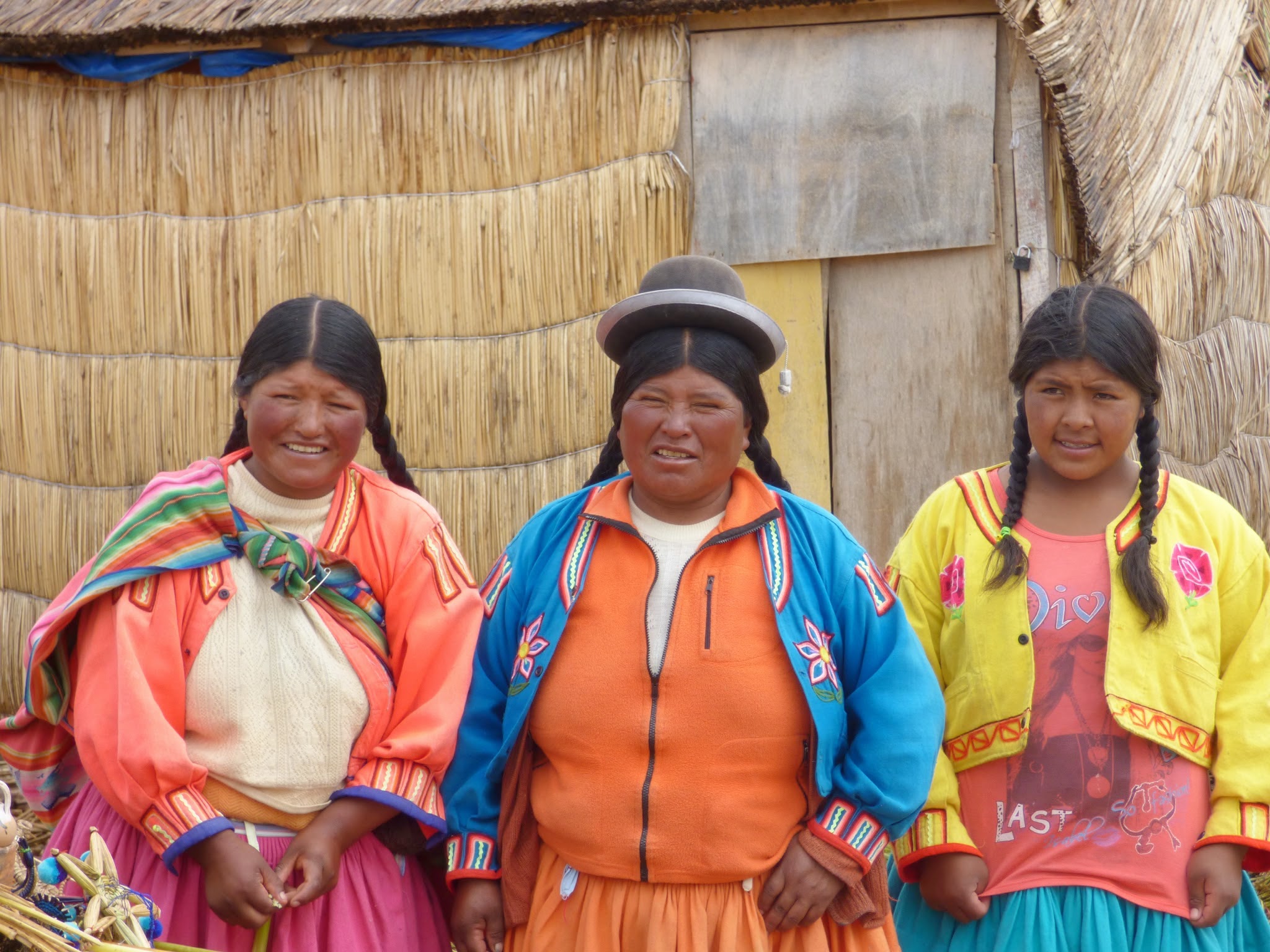To visitors to Lake Titicaca, a boat trip to the floating islands, a unique tourist destination, is a must. These islands are made and re-made from the totora reeds which provide home, sustenance and transportation for their residents. About a two hour boat ride from Puno, on the Peruvian side of the lake, the largest of about 40 islands and the main destination is the ialand of Santa María. See map showing location of Uros islands and Taquile island off Puno, Peru.
These floating islands are the home of the Uros tribe, one which pre-dates the Incan civilization. According to their legends, they existed before the sun, when the earth was still dark and cold. They were impervious to drowining or being struck by lightning. They lost their status as super beings when they disobeyed universal order and mixed with humans, making them susceptible to contempt. They scattered, losing their identity, language, and customs. They became the Uro-Aymaras, and now speak Aymara. Because of their simple and precarious lifestyle, the Incas thought them worth little and accordingly taxed them very little. Yet the Uros, with their basic reed homes outlasted the mighty Incas with their huge stone temples and mountain-top enclaves.
The totora is a cattail type rush growing native in the lake. Its dense roots support the top layer, which rots and must be replaced regularly by stacking more reeds on top of the layer beneath. The islands change in size, and more are created as the need arises. The largest island is currently Tribuna. The surface of the islands is uneven, thin, and some liken walking on it to walking on a waterbed. The unwary might not notice a thin spot and sink a leg or more into the frigid waters of the lake.
The islands are part of the Titicaca National Reserve, created in 1978 to preserve 37 thousand hectares of marsh reeds in the south and north sectors of Lake Titicaca. The reserve is divided into two sections, Ramis, in the provinces of Huancané and Ramis; and Puno, in the province of the same name. The reserve protects over 60 species of native birds, four families of fish and 18 native amphibians species. There are three islands in the lake, Huaca Huacani, Toranipata and Santa María.
The floating islands are protected within the Bay of Puno and are home to 2000 or so Uros, who claim to have "black blood" are consequently immune to the cold. They call themselves be kot-suña, or people of the lake, and consider themselves the owners of the lake and its waters. They continue living by fishing, weaving and now, tourism. They catch fish for themselves and to sell on the mainland. They also catch shore birds and ducks for eggs and food. Occasionaly, if the level of the lake decreases, they may plant potatoes in soil created by the decaying reeds, but as a norm, they are not agricultural. The reed boats quite often have an animal face or shape on the prow and are a favorite photographic subject.
our boat for the day
Our island
Name is Suma sap
we are met by the women since the men are on the lake fishing
we get a very nice description of what these islands are all about, how they are built and when their purpose is.
This is the patriarch af the island where we are. 25 people leave here out of a total of 2000
Very friendly
Beside fishing they also hunt for food
Mother and daughters
we are then dressed in traditional clothing and offered to stay on the islands
"G" from the office did joined us for the GPU, see next post
we were hopping for a Mac Donald
we ended up on a raft
pretty confortable
we experienced the rowing....





















No comments:
Post a Comment